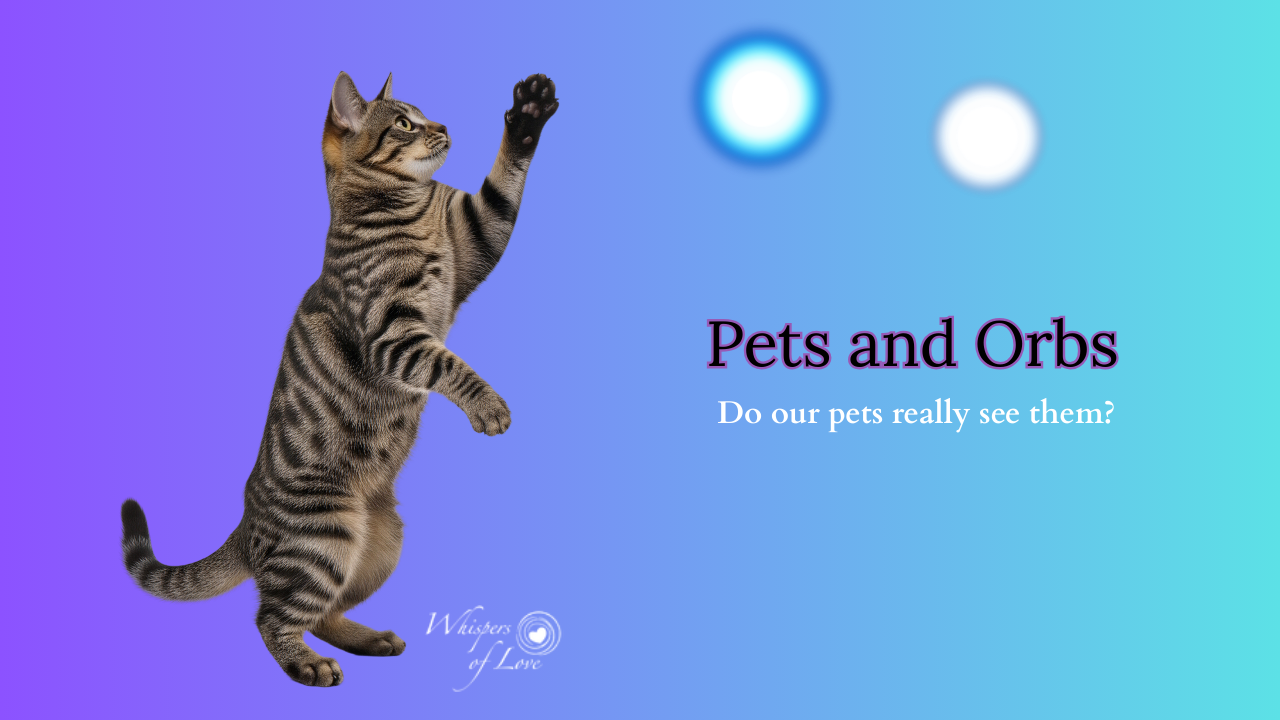Animals Talk to Us in Multiple Ways
May 16, 2024
Animals Talk to Us in Multiple Ways
Animal communication is an invaluable skill that supports the human-animal bond while protecting both people and their animal companions. Despite skepticism over the very idea of being able to talk to horses, dogs, cats, rabbits, and other pets, I assure you that it's not only possible, but actually an invaluable way to ensure that our animals live happy, healthy, and meaningful lives while honoring our bond at the same time.
How Animal Communication Keeps Us Safe and Secure
I have long been able to hear what animals are thinking and feeling. And in many cases, being able to listen to animals has made an enormous impact not only on their lives, but in their families’ lives as well. For instance, feeling severe heartburn in a dog, living across the country, who refused to eat for over a week. He had stumped 2 vets with the reason why he refused to eat. They tested everything. It wasn’t until I felt it and mentioned the severe burning pain to his human, that his human was able to help him to find relief with some herbs and dietary changes that I suggested. A week later, he was successfully eating again, joyfully, and gaining back the weight he had lost. I am so glad I could help him to feel better, with the help of animal communication, and assist his human caretaker in helping him with his healing journey.
Animal Communication can uncover and remedy behavior issues and physical pains
On the other hand, not listening to our animals can be dangerous for them as well as for us. For example, several years ago, I was in the boarding barn tending to my horse when I heard someone clearly and distinctly say I’m hurting. I turned around and realized the voice was coming from my barn mate’s horse, Saz. Normally easy going and cooperative, Saz was being unusually fussy as she was being saddled up. Concerned, I immediately related to my barn mate “Beth”, what Saz had told me, trying to make sure Saz was being heard. Unfortunately, “Beth” did not believe me and blatantly discounted my warning. Soldiering on with preparations for the ride, “Beth” ignored my pleas to stop even though Saz continued to fuss and dance around erratically and anxiously as “Beth” tacked her up.
Wracked with anxiety, I watched Saz and “Beth” enter the arena. My apprehension grew as Saz refused to let “Beth” mount her. Clearly expressing that she was incapable of riding that day, Saz walked away from the mounting block..not one or two but five times! - yet her human refused to pay attention to Saz’s obvious physical communications or the fact that Saz told me she was in pain.
Remember, animals first tell us what they want telepathically; their second signal is through body language.
In this case, she was demonstrating her discomfort - with her pain presenting as sassiness and a stubborn refusal to be ridden. In essence, she was reinforcing via physical displays, what I had heard her say, telepathically. While she is not an animal communicator, even “Beth” could have paid attention to Saz’s body language and changed her approach to the situation.
Instances like these reinforce for animal communicators that they have, indeed, heard and understood exactly what an animal has said because it is being physically demonstrated, after being told telepathically.
When we are aware of the subtle changes in our animals, it’s not always so easy to see their physical signs of pain, which is why animal communication is so beneficial.
Cats notoriously mask their pain as an evolutionary form of protection against predators, for instance, and some trauma leaves emotional scars that may not be apparent at first glance. This is why learning to communicate with animals - and asking them directly how they are doing or feeling - is so useful and important.
In “Beth”’s case, not acknowledging my warnings led to disaster. See, after struggling for 15 minutes to mount Saz and refusing anyone's help, “Beth” finally got her way and began the ride. Ultimately, she wished she hadn’t pushed her horse past her limits since a major disaster occurred during their first walk around the arena. Incapable of carrying the weight, Saz proceeded to run “Beth” straight into the wall, causing her to fall off and break a hip.
This tragedy could have been avoided if my barn mate would have done two very important things:
- Listened to me, the animal communicator who was trying to help them both.
- If she would have paid attention and observed the physical signs her horse was clearly demonstrating that she did NOT want to be ridden.
This incident not only validated my ability to talk to animals, but underscores how wildly important it is to do so. Thankfully, “Beth” was able to get Saz the help she needed, and they both recovered together.
But if more and more people learn the art of talking to animals, we will begin to change our culture - putting animals’ needs front and center and recognizing their sentience and intelligence.
Animal communicators make such a difference in the world. All of the animals in your life will thank you!
Every living human is born with the ability to talk with animals. If you have turned off your abilities to speak with animals, let me show you how to turn them back on again. You can join the Waitlist for my course Fall 2024




